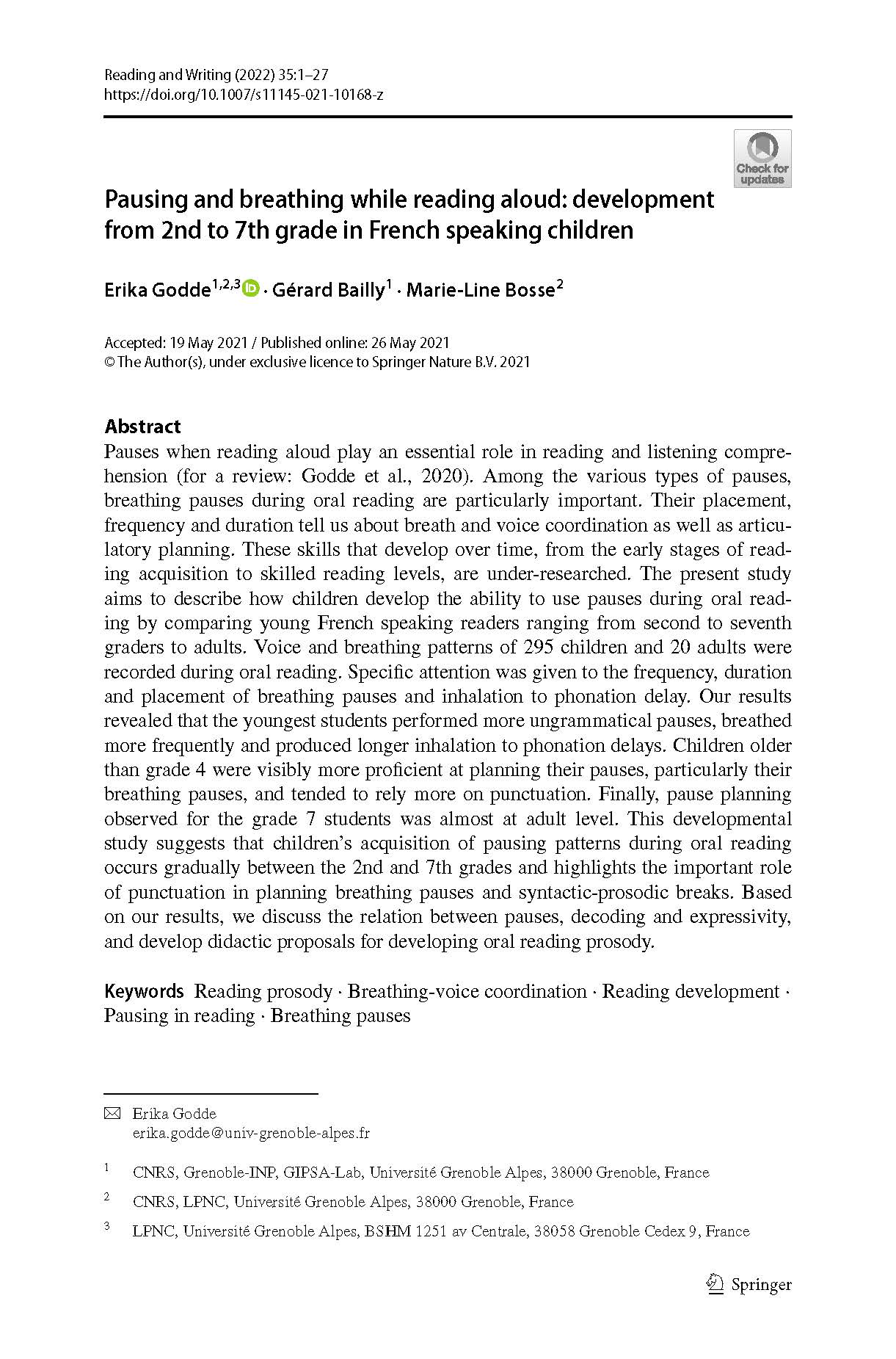Pauses when reading aloud play an essential role in reading and listening comprehension (for a review: Godde et al., 2020). Among the various types of pauses, breathing pauses during oral reading are particularly important. Their placement, frequency and duration tell us about breath and voice coordination as well as articulatory planning. These skills that develop over time, from the early stages of reading acquisition to skilled reading levels, are under-researched. The present study aims to describe how children develop the ability to use pauses during oral reading by comparing young French speaking readers ranging from second to seventh graders to adults. Voice and breathing patterns of 295 children and 20 adults were recorded during oral reading. Specific attention was given to the frequency, duration and placement of breathing pauses and inhalation to phonation delay. Our results revealed that the youngest students performed more ungrammatical pauses, breathed more frequently and produced longer inhalation to phonation delays. Children older than grade 4 were visibly more proficient at planning their pauses, particularly their breathing pauses, and tended to rely more on punctuation. Finally, pause planning observed for the grade 7 students was almost at adult level. This developmental study suggests that children’s acquisition of pausing patterns during oral reading occurs gradually between the 2nd and 7th grades and highlights the important role of punctuation in planning breathing pauses and syntactic-prosodic breaks. Based on our results, we discuss the relation between pauses, decoding and expressivity, and develop didactic proposals for developing oral reading prosody.
Pausing and breathing while reading aloud: Development from 2nd to 7th grade in French speaking children
